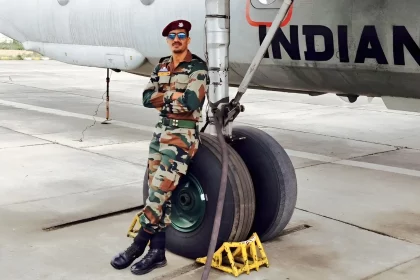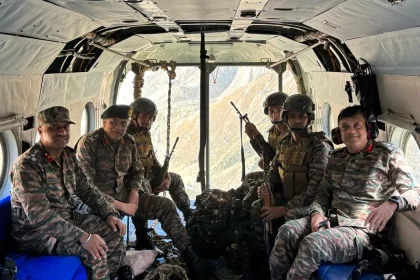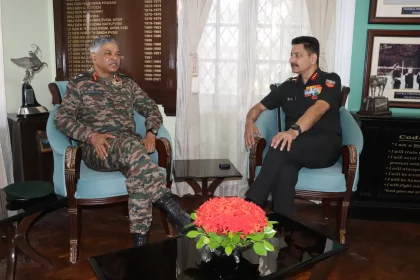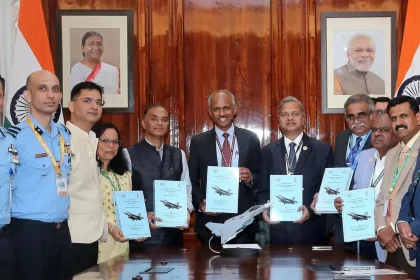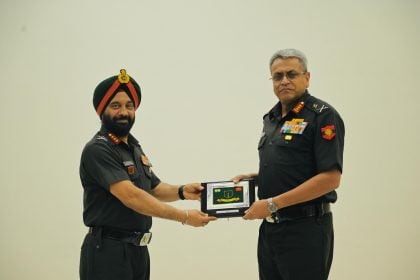New Photograph of Alleged RAW Agent Vikash Yadav Released by U.S. Authorities
Despite these denials, analysts say the release of the new image signals Washington’s determination to keep diplomatic pressure on New…
Exercise Dhruv Tara: Indian Army and IAF Demonstrate High-Altitude Joint Warfare Mastery in Panchshul Sector
The exercise is part of a broader effort to enhance interoperability, sharpen response times, and ensure swift, decisive action in…
Lt Gen Nagendra Singh Interacts with NDC Delegation at Indian Military Academy
The interaction between IMA and NDC underscores the continuum of leadership development within the Indian Armed Forces.
Govt Signs ₹62,370 Crore Deal With HAL to Procure 97 LCA Tejas Mk-1A Jets for IAF
Second Major Tejas Mk-1A Contract With HAL Marks Milestone in IAF Modernisation, Generates Over 11,000 Jobs Annually.
Lt Gen Anindya Sengupta Visits Military Intelligence Training School in Pune, Stresses Cognitive Dominance in Future Battlefields
Central Command Chief Calls for Adaptive Thinking, Jointness, and Operational Excellence in Military Intelligence Training.
Surg Rear Admiral Dilip Raghavan Takes Charge as Command Medical Officer, Eastern Naval Command
Experienced ENT Specialist Surg Rear Admiral Dilip Raghavan Assumes Leadership of Medical Services at Eastern Naval Command.

